Where Are Cranberries Grown?
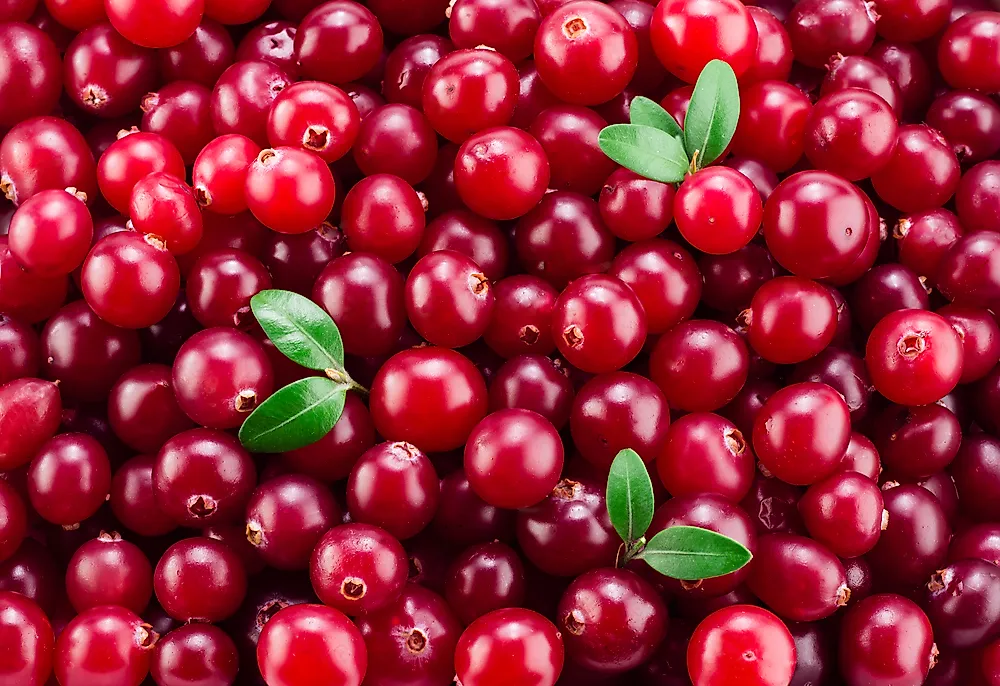
As the potential health benefits of cranberries become more widely advertised, consumption of them is increasing all across the globe. Nonetheless, the production of cranberries is not very evenly distributed across the agricultural sectors of different countries. In fact, about 98% of global production comes from the United States of America and Canada alone. Even though there are generally similar processes in place in the production of cranberries among the countries growing the fruit, each locale has its own unique qualities that determines productive outputs. We break down the top 10 list of cranberry-producing countries, based on their respective production levels in tons, and try to provide some insight into the reasons behind the marked North American advantage in growing this tart ‘super fruit’ crop.
10. Tunisia - 180
Many important parameters are necessary to be put in place by Tunisian growers to ensure the viability of commercial cranberry farming there. These include the physiological status of the plants in the wake of the crucial overwintering period, having soil or substrate that is conducive to growth, adequate cultivation area, and efficient irrigation systems. The notable assortment of cranberry varieties there include 'Stevens', 'Bergman', 'Ben Lear', and others. Tunisian cranberries are often cultivated neighboring blueberry growing operations. Unlike most of the rest of the countries on our list, growers in Tunisia often do not have peat soils, and must plan and modify their local soils accordingly. Tunisia produces about 180 tons of cranberries a year.
9. Macedonia - 290
Macedonia produces around 290 tons of cranberries annually. The last steps in preparations for cranberry production in the country include spreading layers of sand on the chosen territory after it is otherwise ready for planting. Cuttings from full grown cranberry plants are squeezed into the sand, and the territory is subsequently drenched with water. Consistent watering is essential until the new plants have built themselves up. New cranberry plants will start delivering edible produce within the following two years, yet it takes an extra couple of years to collect what might be considered a commercially viable crop.
8. Ukraine - 400 Tons

Ukraine produces around 400 tons of cranberries a year. The last flooding of the cranberry developing season happens at harvest time, when all Ukrainian cranberry beds are secured with water. An uncommon cranberry collecting machine is driven through the bed to foment the water and agitate the berries off their vines. The machines used for the cranberry harvest are lightweight, and furnished with inflatable tires to move over the marshes without harming the plants. Cranberries glide in water, so they ascend to the surface. ‘Coasting blasts’ are utilized to coral the berries and attract them to a gathering point along the edge of the bed. The subsequent manual gathering is the most serious and laborious work of the entire cranberry harvest. The berries are expelled from the water, stacked into wagons, and taken away to be dried and sorted by hand.
7. Romania - 563 Tons
Cranberries flourish in Romania, in particular due to a kind of acidic peat soil that actually harms numerous assortments of other flora. To build up a cranberry farm for commercial purposes in Romania, an itemized procedure must be taken. All vegetation is expelled from the chosen territory and pushed to the sides. This vegetation is later utilized as base material for dykes that encompass the future cranberry lowland. The reason for the dykes is to contain water amid times of flooding and for the creases between cranberry beds. Sooner or later amid the development process, jettison and holding lakes for water are burrowed too. Funneling for watering systems is also introduced. Romania produces around 563 tons of cranberries annually.
6. Latvia - 617
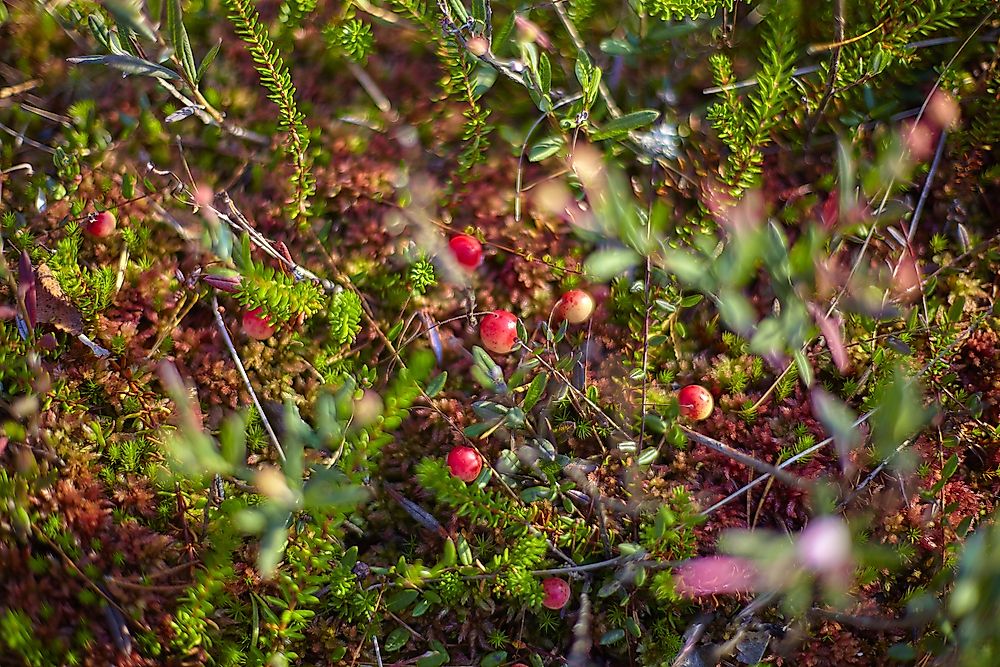
Cranberries and high bush blueberries are generally new crops for extensive commercial cultivation in Latvia. Cranberry estates as primary business operations were first established here in 1985. These days, the average size of cultivated area for individual cranberry farms is around 100 hectares, which makes them the third largest on the planet. Blueberry farms there, contrasted to those of other European states, are not much larger, at around 170 hectares on average. The Latvian regions known for their high greenery peat lowlands have been largely depleted, and are increasingly being utilized as cranberry fields. In Latvia, such cultivated marshes’ territories total roughly around 10,000 hectares. Latvian cranberry and blueberry crops are often grown on the same estates under similar programs, and are grown in all four “organic product” growing regions in the country. The country produces around 617 tons of cranberries annually.
5. Azerbaijan - 2,800
Azerbaijan records an annual production of around 2,800 tons of cranberries. Cranberry swamps in Azerbaijan are watered occasionally amid the developing seasons. The areas are scheduled to be overflowed in spring and late fall if seasonal ice covers are normal. A whole cranberry product can be lost to what is known as a ‘murdering ice’ if the blooms and youthful berries are not ensured in a shower of water. At the end of the developing season, flooding may be important to shield the adult berries from ice, while sprinkler frameworks are utilized for lighter ices. Cranberry swamps are watered occasionally in summer as well, which additionally serves as a unique kind of insect pest control. Such water is diverted from holding lakes to minimize the impacts on nearby streams.
4. Belarus - 8,000
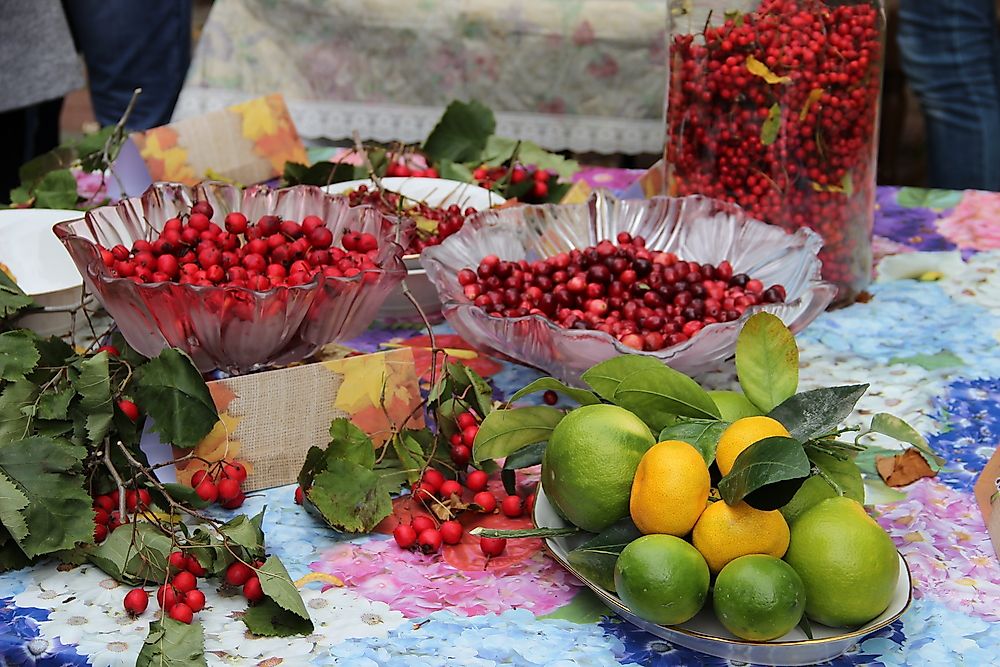
Belarus falls in fourth, with an annual production of 8,000 tons of cranberries. At the point when individuals discover that the cranberry is a swamp plant, this obviously drives some to think cranberries develop in water. While the fruitful development of cranberries requires a decent supply of water, they don't really develop in it. Indeed, a great deal of exposed dirt can be vital amid the developing season, and bogs are often drained at times as a result. Still, most sorts of plants need customary watering, and cranberries are among them. Belarus’s marshy lands are ideal for such reasons.
3. Chile - 82,000
In recent years, cranberry production in Chile has been on the rise, and it is expected to rise even further. The reason behind this growth is the expansion of harvestable areas. As its production of cranberries grows, Chile is becoming an even more important exporter of the fruit. The main recipients of Chile's cranberry exports are China, North America, and Europe. One advantage of Chile's harvesting season is their location in the southern hemisphere. This means that the growing season in Chile occurs at a different time than the growing season of other large markets in North America and Europe.
2. Canada - 176,036 Tons
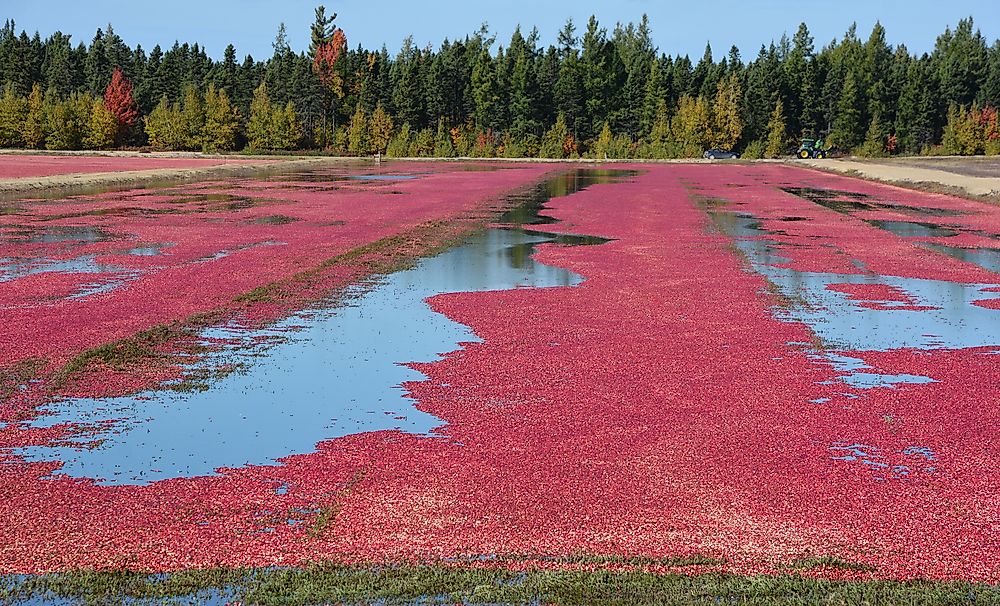
Canada stands as the world’s second most productive cranberry grower, with the country registering an annual total production of 176,036 tons. In some places, growing operations have even transformed entire landscapes. The Canadian company Upper Canada Cranberries is the largest cranberry cultivating firm in Eastern Ontario, and they were among the companies to disrupt Eastern Ontario’s natural environments through their operations there. The Upper Canada Cranberries Farm location is, naturally, an undeniable marsh, as confirmed by tits massive amounts of peat and its acidic soil. Be that as it may, in the first half of the last century, seepage in the area changed this locale drastically, partly because of the strategies utilized as a part of new methods of cranberry cultivation. Accordingly, the territory now cultivated by Upper Canada Cranberries is no longer a swamp, and an environment that will not likely return to its natural state any time soon.
1. United States - 381,018 Tons
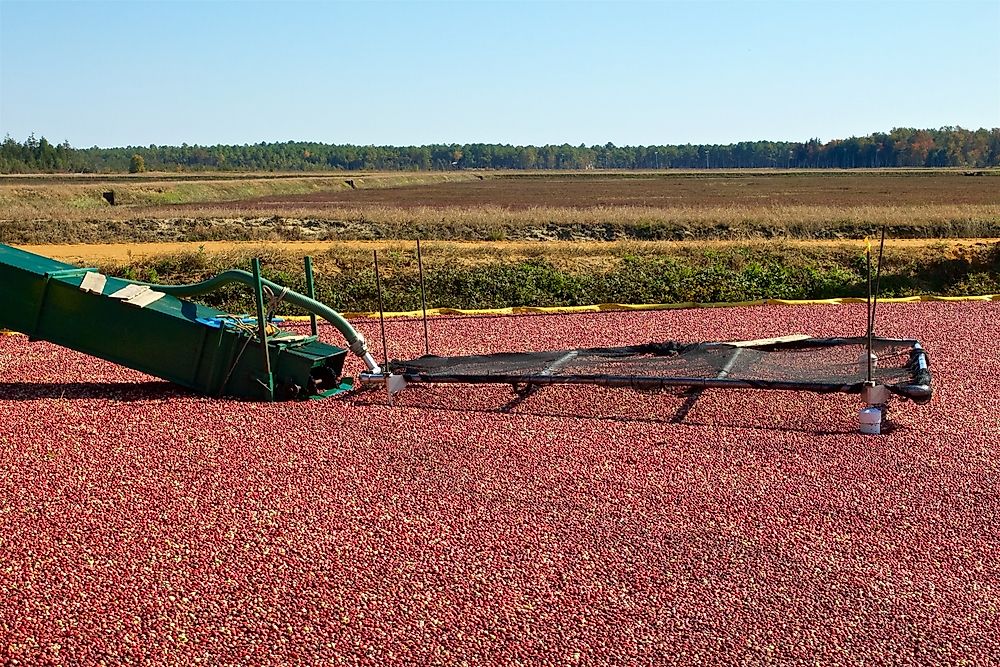
Cranberries are a notably lucrative crop in certain American states. It comes as no surprise that America leads with an annual production of 381,018 tons. Within the US, the Ocean Spray co-op is the most recognizable cranberry processor. The fruit’s long-standing history of medicinal and culinary uses there dates back to pre-Colonial times. Because of their tartness in the raw state, most cranberries are prepared into processed food products, such as juice, sauce, stick, and sweetened dried cranberries (‘craisins’), as these are more appealing to purchasers’ palates. Cranberry sauce is a traditional sweet side at Christmas and Thanksgiving dinners in the United States. Amid the developing seasons, cranberry beds here are not frequently watered, but only routinely sprayed to keep up soil dampness. Beds are overflowed in the fall to encourage harvest (creating ‘bogs’) and again amid the winter months to secure against low temperatures.
The Largest Producers of Cranberries
| Rank | Country | Production in Tons |
|---|---|---|
| 1 | United States of America | 381,018 |
| 2 | Canada | 176,036 |
| 3 | Chile | 82,000 |
| 4 | Belarus | 8,000 |
| 5 | Azerbaijan | 2,800 |
| 6 | Latvia | 617 |
| 7 | Romania | 563 |
| 8 | Ukraine | 400 |
| 9 | The former Yugoslav Republic of Macedonia | 290 |
| 10 | Tunisia | 180 |
| 11 | Turkey | 114 |
| 12 | Spain | 100 |
| 13 | Bulgaria | 90 |
| 14 | France | 53 |











